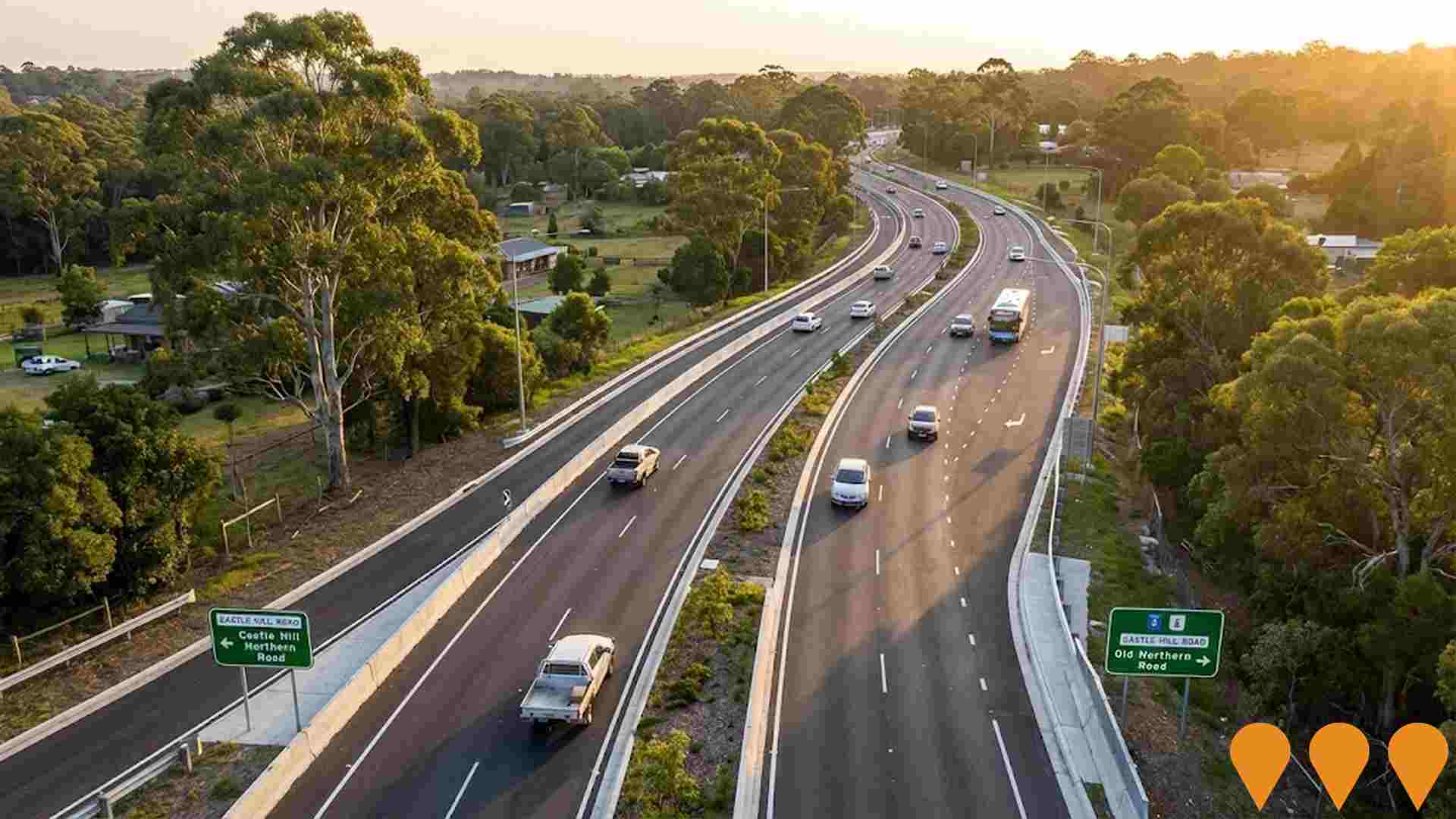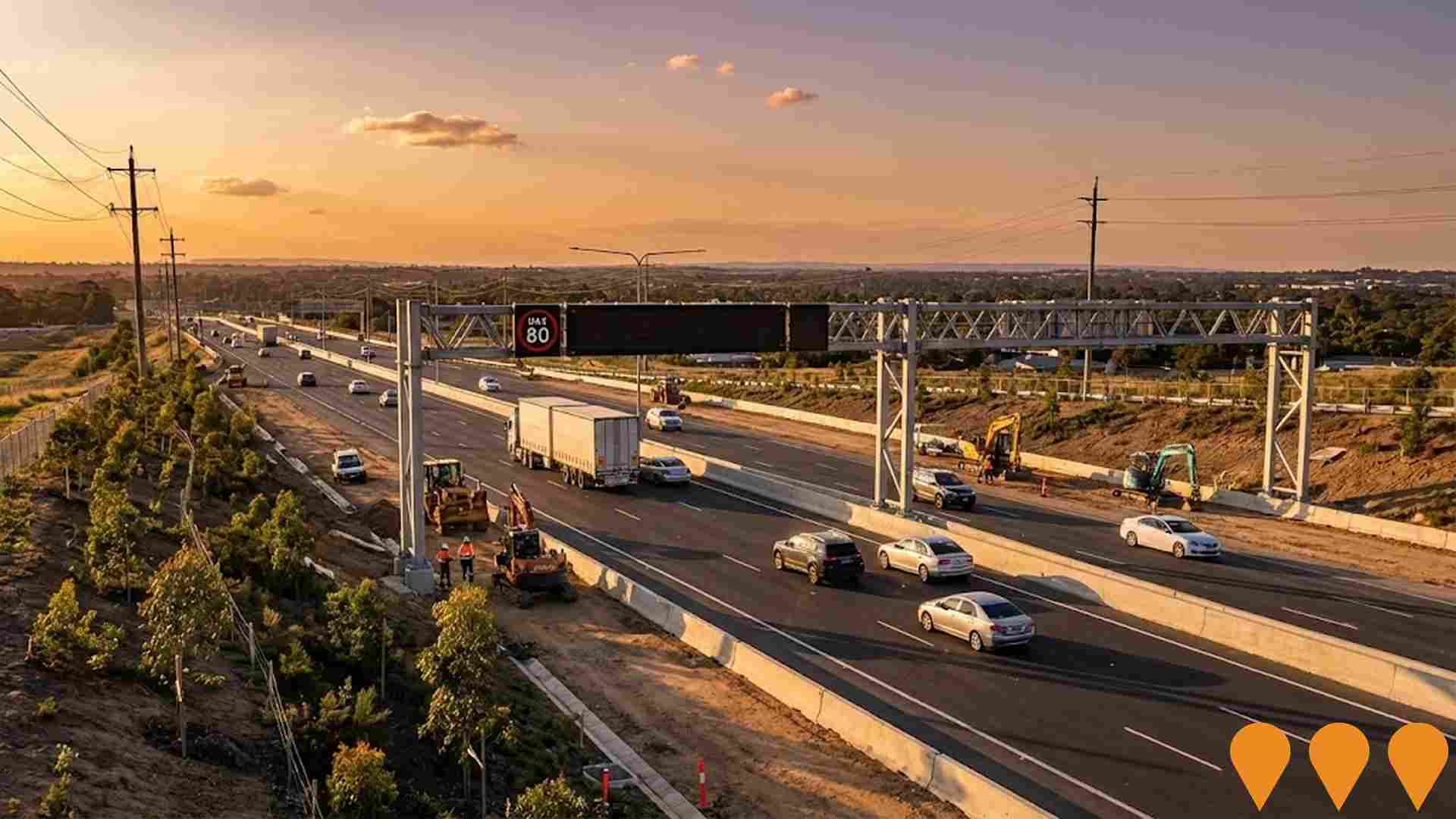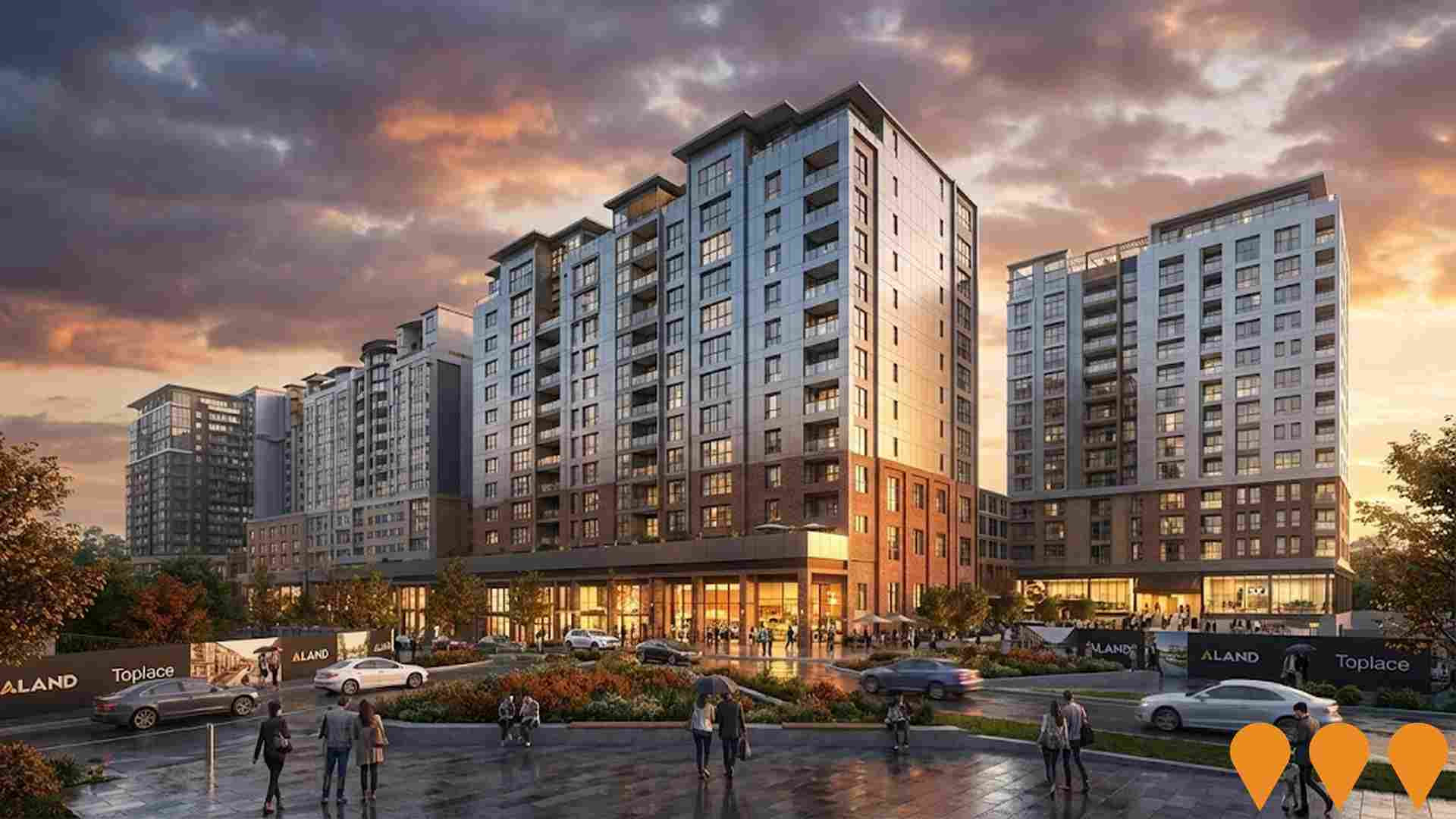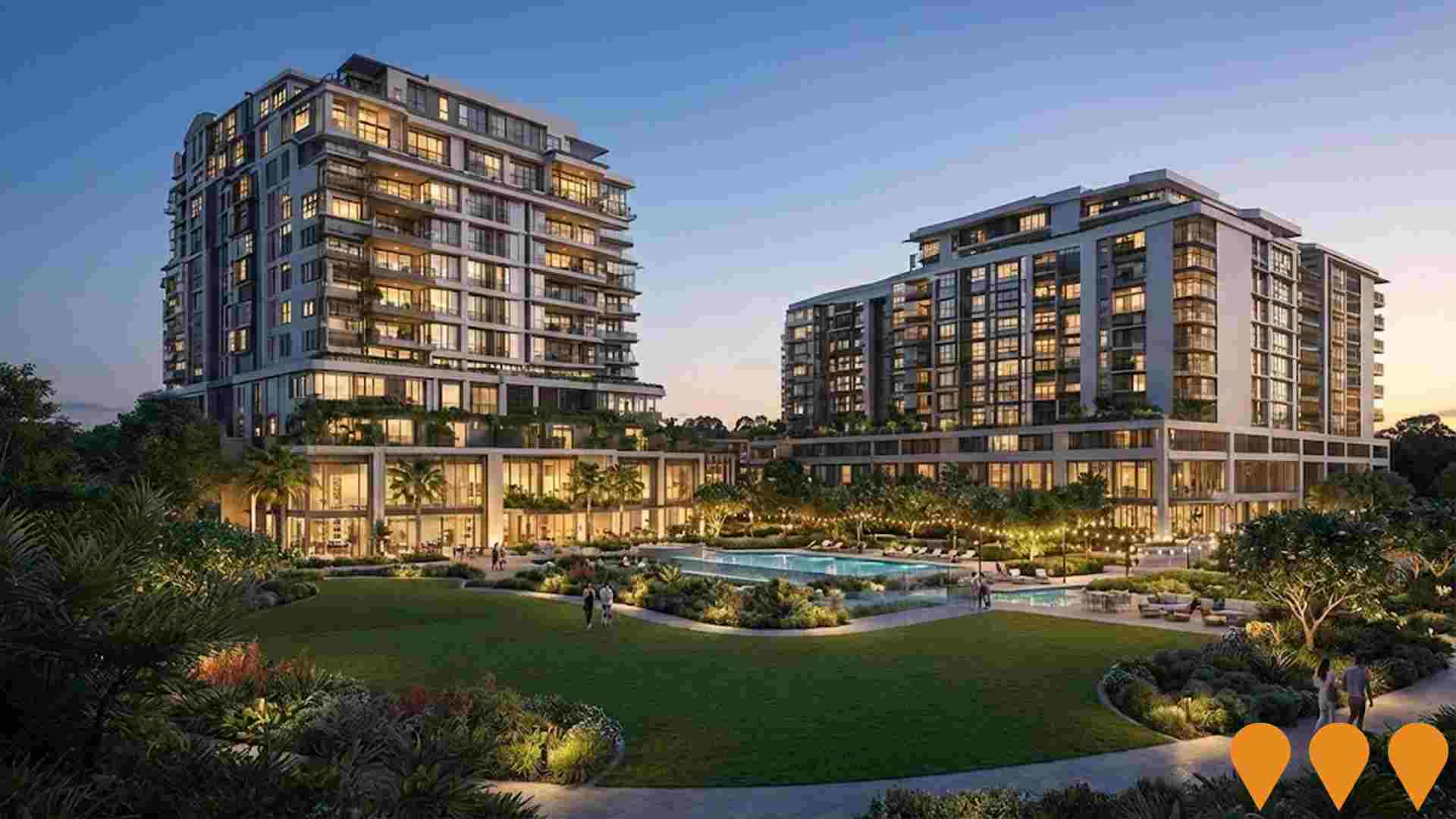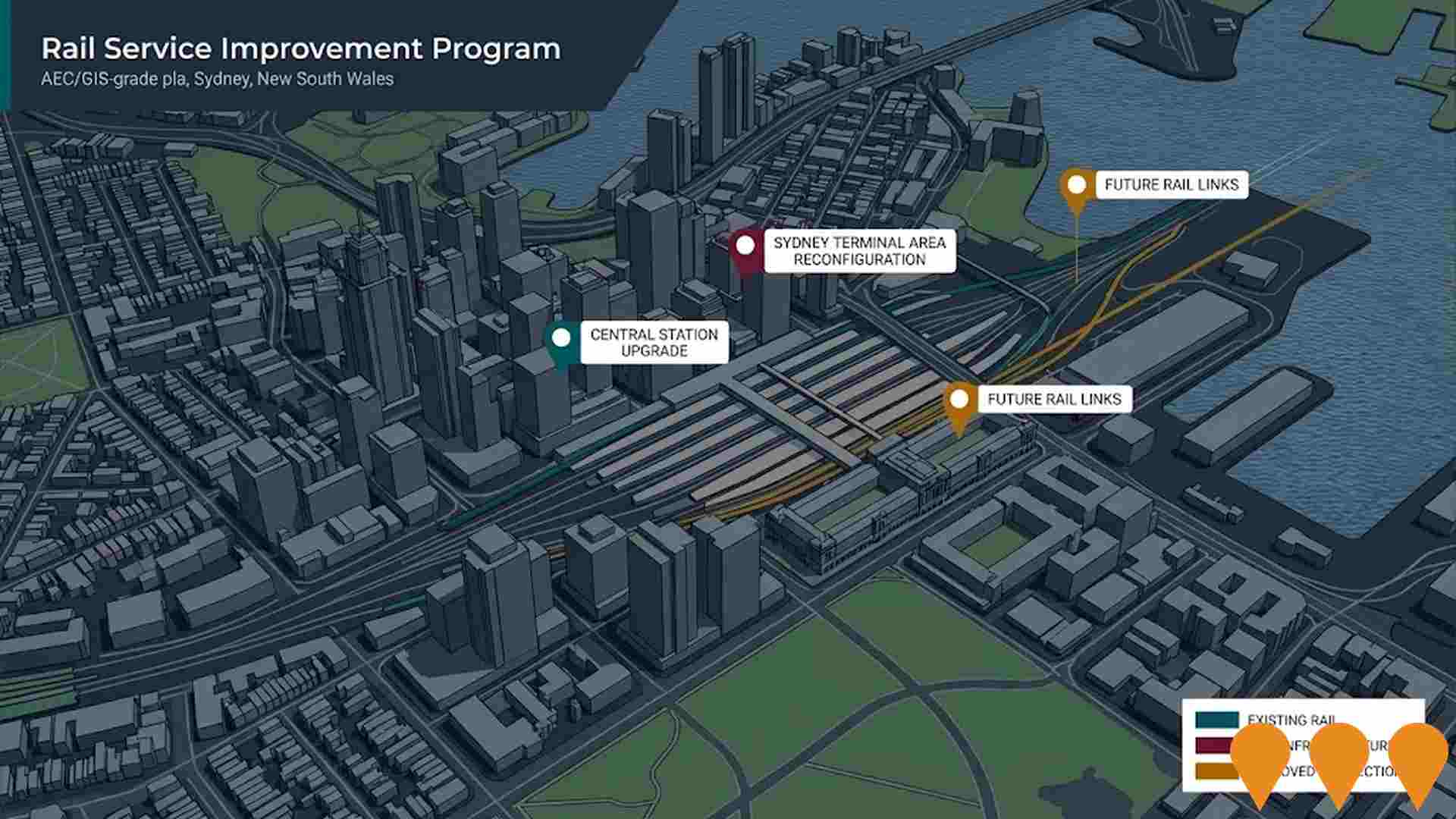Chart Color Schemes
est. as @ -- *
ABS ERP | -- people | --
2021 Census | -- people
Sales Activity
Curious about local property values? Filter the chart to assess the volume and appreciation (including resales) trends and regional comparisons, or scroll to the map below view this information at an individual property level.
Find a Recent Sale
Sales Detail
Population
Castle Hill - East is positioned among the lower quartile of areas assessed nationally for population growth based on AreaSearch's assessment of recent, and medium term trends
Castle Hill - East's population is around 5,382 as of November 2025. This reflects a decrease since the 2021 Census, which reported a population of 5,670 people. The decrease of 288 people (5.1%) is inferred from the estimated resident population of 5,384 in June 2024 and address validation since the Census date. This level of population equates to a density ratio of 2,600 persons per square kilometer, placing it in the upper quartile relative to national locations assessed by AreaSearch. Population growth for the area was primarily driven by overseas migration.
AreaSearch is adopting ABS/Geoscience Australia projections for each SA2 area, as released in 2024 with a base year of 2022. For areas not covered by this data, AreaSearch utilises NSW State Government's SA2 level projections, released in 2022 with a base year of 2021. Growth rates by age group from these aggregations are applied to all areas for years 2032 to 2041. Based on the latest population numbers, Castle Hill - East is expected to increase by 510 persons to 2041, recording a gain of 9.5% over the 17-year period.
Frequently Asked Questions - Population
Development
The level of residential development activity in Castle Hill - East is very low in comparison to the average area assessed nationally by AreaSearch
Castle Hill - East has recorded approximately three residential properties granted approval annually. Between FY21 and FY25, 16 homes were approved, with none yet approved in FY26.
The population has declined recently, but housing supply has remained adequate relative to demand, resulting in a balanced market with good buyer choice. New properties are constructed at an average value of $168,000, below regional norms, offering more affordable housing options. Compared to Greater Sydney, Castle Hill - East has significantly less development activity, 94.0% below the regional average per person, which typically strengthens demand and prices for existing properties. This is also below national averages, suggesting possible planning constraints. Recent development has consisted entirely of detached dwellings, maintaining the area's traditional suburban character focused on family homes.
At around 4040 people per approval, Castle Hill - East shows a mature, established area with a forecasted population increase of 512 residents by 2041. If current development rates continue, housing supply may struggle to match population growth, potentially increasing buyer competition and supporting price increases.
Frequently Asked Questions - Development
Infrastructure
Castle Hill - East has moderate levels of nearby infrastructure activity, ranking in the top 50% nationally
AreaSearch has identified four projects that could impact the area's performance: Hills Shire Council Delivery Program and Operational Plan 2024-2025 Infrastructure Works, New Line Road Upgrade, Sydney Metro Northwest, and Cherrybrook Precinct Rezoning Proposal. These are the key projects likely to have significant relevance.
Professional plan users can use the search below to filter and access additional projects.
INFRASTRUCTURE SEARCH
 Denotes AI-based impression for illustrative purposes only, not to be taken as definitive under any circumstances. Please follow links and conduct other investigations from the project's source for actual imagery. Developers and project owners wishing us to use original imagery please Contact Us and we will do so.
Denotes AI-based impression for illustrative purposes only, not to be taken as definitive under any circumstances. Please follow links and conduct other investigations from the project's source for actual imagery. Developers and project owners wishing us to use original imagery please Contact Us and we will do so.
Frequently Asked Questions - Infrastructure
Sydney Metro West
A $27 billion, 24-kilometre underground metro railway doubling rail capacity between Greater Parramatta/Westmead and the Sydney CBD. Features 9 fully accessible, air-conditioned, driverless stations: Westmead, Parramatta, Sydney Olympic Park, North Strathfield, Burwood North, Five Dock, The Bays, Pyrmont, and Hunter Street. Tunneling on the western section (Pyrmont to Westmead) is complete, as of December 2025, with final TBMs heading towards Hunter Street. The project is supporting employment growth and is targeting a 2032 opening.
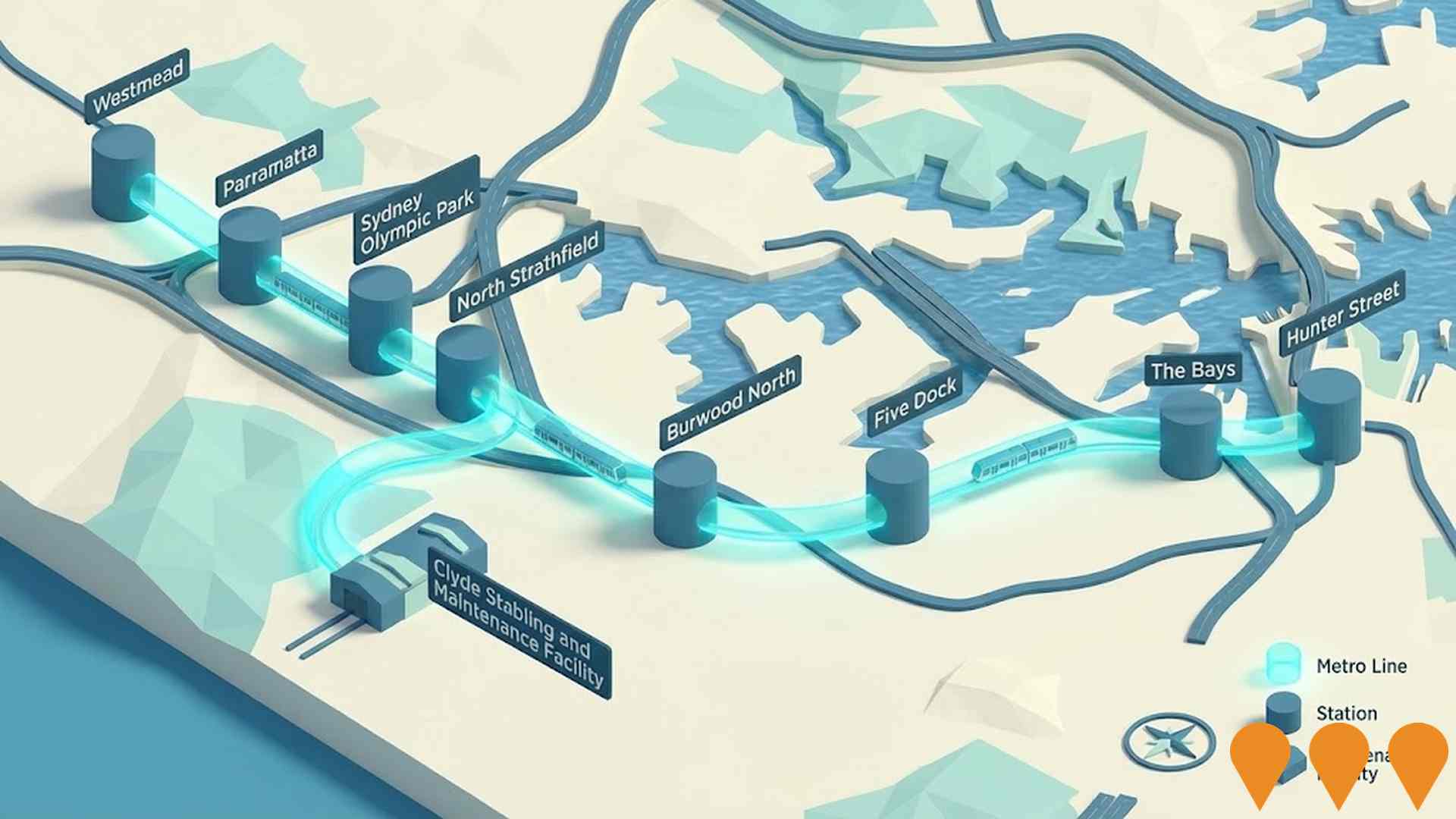
Sydney Metro Northwest
Australia's first fully automated metro rail system and the first stage of Sydney Metro. The 36 km line runs from Tallawong (Rouse Hill) to Chatswood with 13 stations (8 new stations plus the converted Epping to Chatswood rail link). Opened 26 May 2019 with turn-up-and-go services every 4 minutes in peak, platform screen doors and driverless trains. The line has carried over 150 million passenger journeys and now forms part of the extended Sydney Metro network.
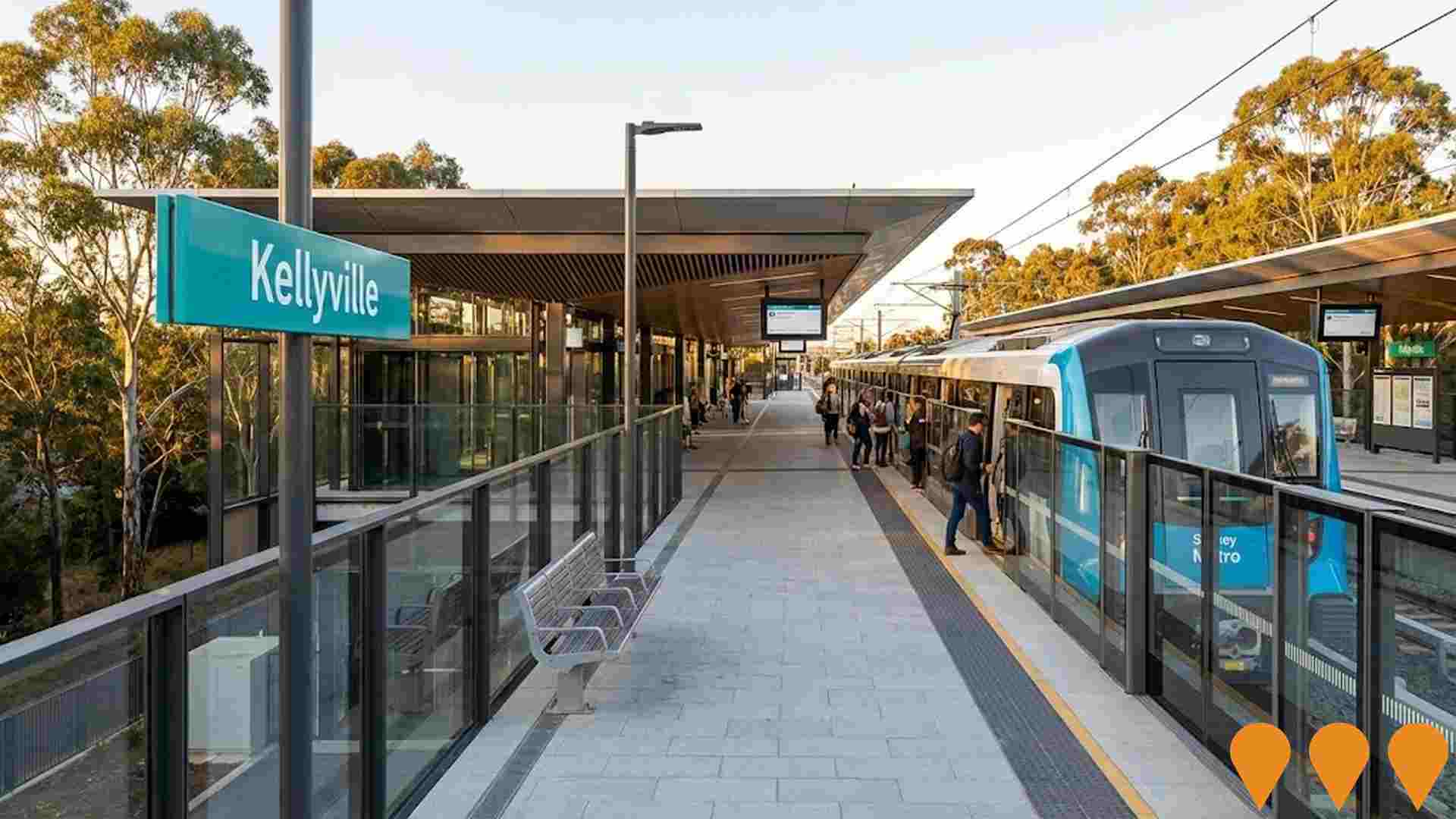
Sydney Metro West
24km fully underground metro railway line connecting Greater Parramatta to the Sydney CBD. New stations at Westmead, Parramatta, Sydney Olympic Park, North Strathfield, Burwood North, Five Dock, The Bays, Pyrmont and Hunter Street in the CBD. Currently under construction with tunnelling and station excavation works progressing across multiple sites. Expected to open in stages from 2032.
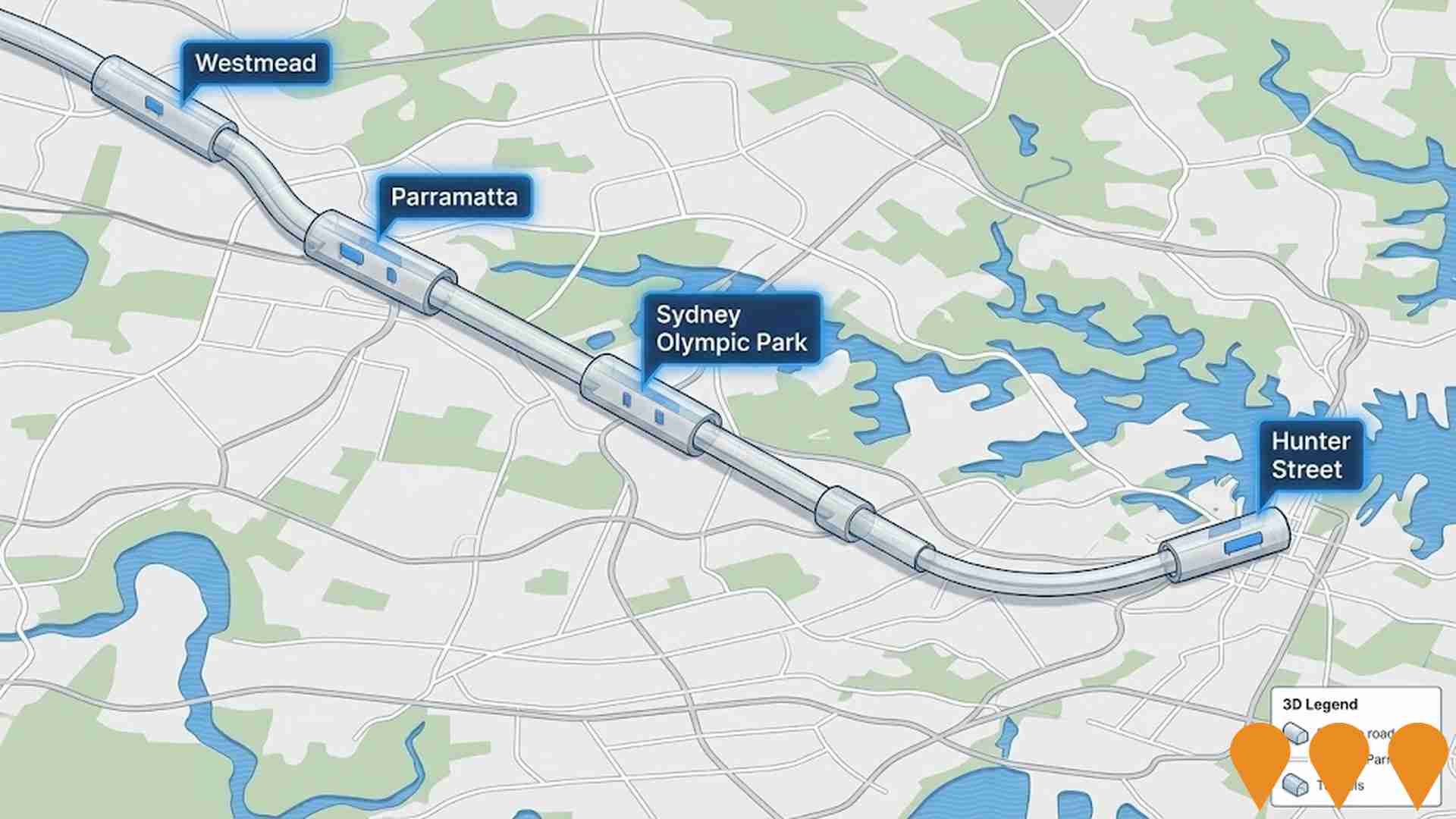
Cherrybrook Precinct Rezoning Proposal
State-led rezoning proposal for the broader Cherrybrook Precinct to create a new town centre and walkable urban community near the Metro station. The plan provides total capacity for up to 9,350 new homes, up to 28-storey maximum building heights, 4.5 hectares of new public open space, and includes mandatory affordable housing (5-10%).

Sydney Metro Northwest
First stage of Sydney Metro featuring a 36km automated rail line from Chatswood to Tallawong with 13 stations including Tallawong and Rouse Hill. The system includes 15.5km twin tunnels (longest in Sydney), 4km elevated skytrain, and 4,000 car parking spaces across stations. Automated trains run every 4 minutes during peak hours. This $8.3 billion investment opened in May 2019 and serves as a crucial transport backbone for northwest Sydney development.
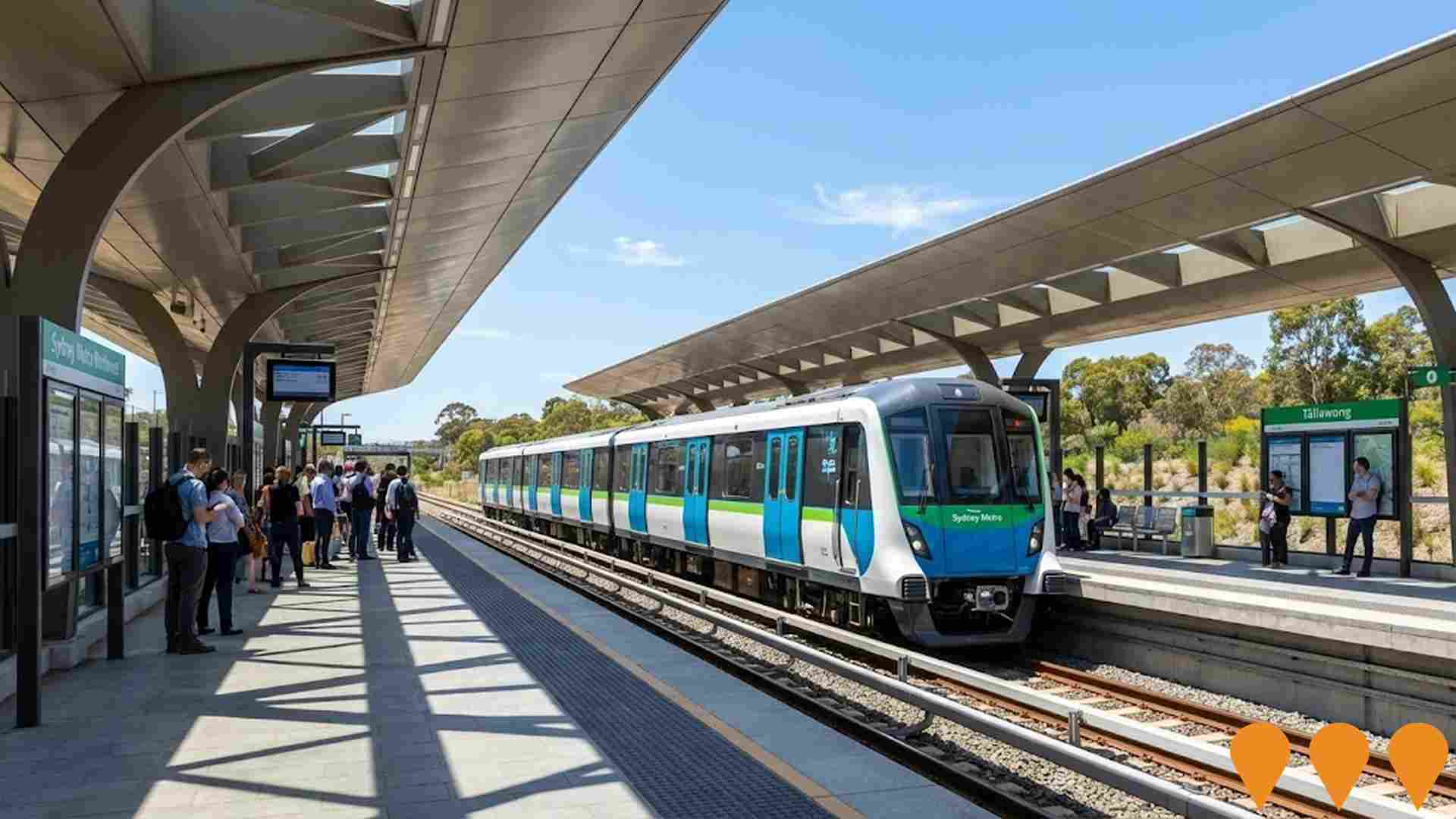
Hills Shire Council Delivery Program and Operational Plan 2024-2025 Infrastructure Works
The Hills Shire Council's 2024-2025 infrastructure program is a significant component of the overall $308.5 million Delivery Program and Operational Plan. The total infrastructure expenditure for 2024-2025 is $162.8 million, focusing on maintaining, renewing, and building new assets like roads, parks, paths, and playgrounds across the Shire to accommodate rapid population growth. Key works include road upgrades (Annangrove Road, Withers Road, Boundary Road), new footpaths, cycleways, bridges, and new and refurbished parks and playgrounds, including Livvi's Place extension at Bernie Mullane Sports Complex. The Council is also actively campaigning for state and federal funding for critical infrastructure, particularly in high-growth areas like Box Hill and the Kellyville/Bella Vista precincts.
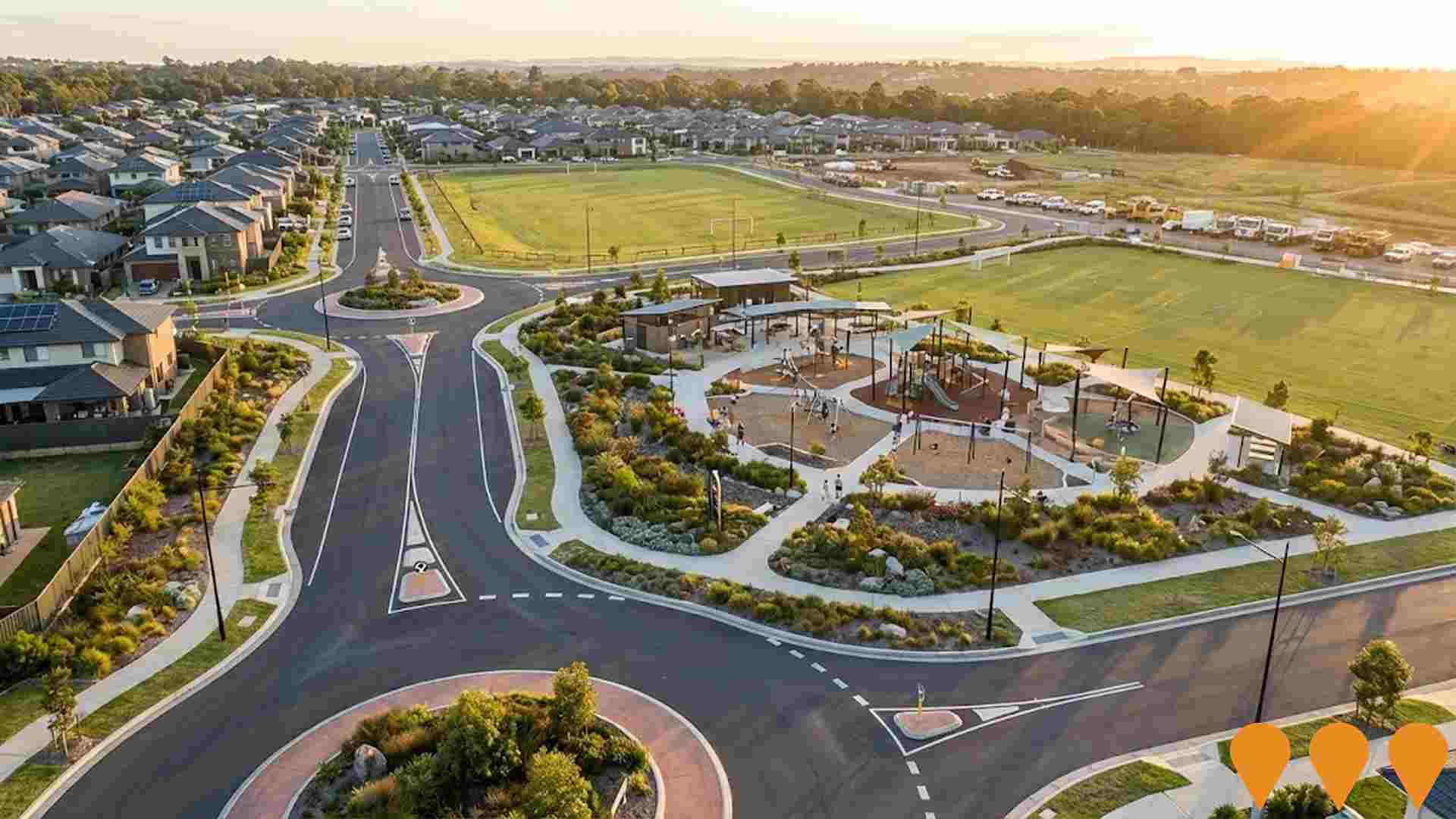
M2 Hills Motorway
The Hills M2 is a 21-kilometre tolled urban motorway linking Sydney's lower north shore and north west regions. It connects with Westlink M7, the Lane Cove Tunnel, and NorthConnex. Most of the road is six lanes wide, with three lanes in each direction. It includes the Epping-Norfolk tunnel. Upgrades including additional lanes were completed in 2013, with ongoing maintenance and road works.
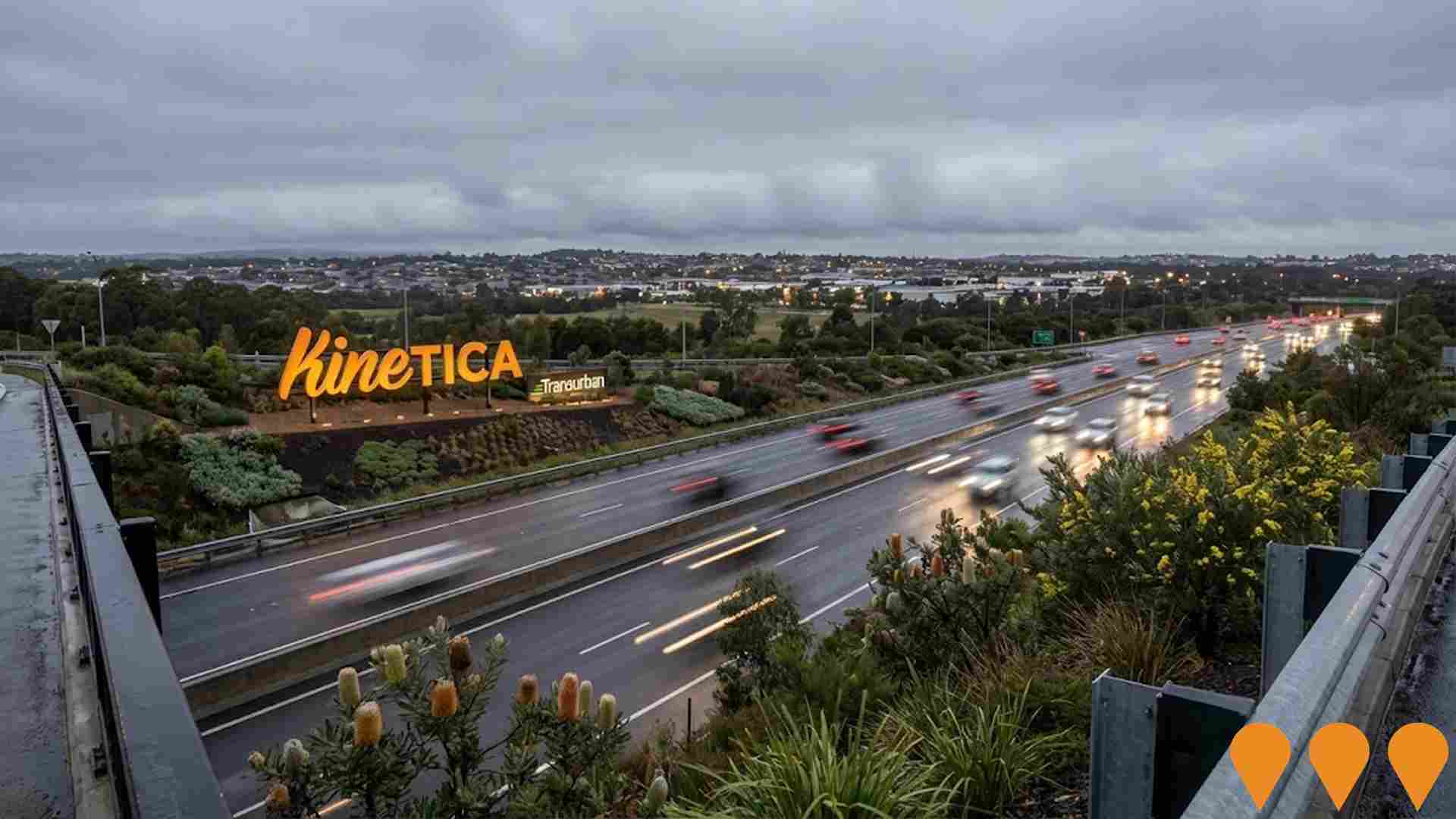
Newcastle-Sydney and Wollongong-Sydney Rail Line Upgrades
Program of upgrades to existing intercity rail corridors linking Newcastle-Central Coast-Sydney and Wollongong-Sydney to reduce travel times and improve reliability. Current scope includes timetable and service changes under the Rail Service Improvement Program, targeted network upgrades (signalling, power, station works) and the introduction of the Mariyung intercity fleet on the Central Coast & Newcastle Line, alongside Federal planning led by the High Speed Rail Authority for a dedicated Sydney-Newcastle high speed corridor.

Employment
AreaSearch analysis places Castle Hill - East well above average for employment performance across multiple indicators
Castle Hill - East has a highly educated workforce with significant representation in the technology sector. Its unemployment rate was 2.2% as of June 2025.
The area experienced an estimated employment growth of 2.3% over the past year. As of June 2025, 2,523 residents were employed, with an unemployment rate of 2.0%, below Greater Sydney's rate of 4.2%. Workforce participation in Castle Hill - East was 46.1%, significantly lower than Greater Sydney's 60.0%. Key industries for employment among residents are professional & technical, health care & social assistance, and education & training.
The area has a particularly notable concentration in professional & technical services, with employment levels at 1.3 times the regional average. However, transport, postal & warehousing has limited presence, with only 2.7% of employment compared to the regional average of 5.3%. Over the 12 months to June 2025, employment in Castle Hill - East increased by 2.3%, while labour force increased by 3.1%, resulting in a rise in unemployment rate by 0.7 percentage points. In contrast, Greater Sydney experienced employment growth of 2.6% and labour force growth of 2.9%, with an unemployment rate increase of 0.3 percentage points. Jobs and Skills Australia's national employment forecasts from May 2025 suggest that national employment will expand by 6.6% over five years and 14.5% over ten years. Applying these projections to Castle Hill - East's employment mix indicates potential local growth of approximately 7.2% over five years and 14.5% over ten years, based on a simple weighting extrapolation for illustrative purposes.
Frequently Asked Questions - Employment
Income
The area exhibits notably strong income performance, ranking higher than 70% of areas assessed nationally through AreaSearch analysis
AreaSearch's latest postcode level ATO data for financial year 2022 shows that Castle Hill - East has a median income of $59,148 and an average income of $87,281. This is higher than Greater Sydney's median income of $56,994 and average income of $80,856. Based on Wage Price Index growth of 12.61% since financial year 2022, current estimates for Castle Hill - East are approximately $66,607 (median) and $98,287 (average) as of September 2025. According to Census 2021 income data, household income ranks at the 66th percentile ($2,014 weekly), while personal income is at the 31st percentile. Income analysis reveals that 27.3% of individuals earn over $4,000 (1,469 individuals). In contrast, the surrounding region has a higher proportion earning between $1,500 and $2,999 (30.9%). Economic strength is evident with 38.0% of households having high weekly earnings exceeding $3,000. This supports elevated consumer spending despite high housing costs consuming 19.0% of income. Disposable income ranks at the 62nd percentile and the area's SEIFA income ranking places it in the 8th decile.
Frequently Asked Questions - Income
Housing
Castle Hill - East displays a diverse mix of dwelling types, with above-average rates of outright home ownership
The dwelling structure in Castle Hill - East, as per the latest Census, consisted of 68.1% houses and 31.9% other dwellings (semi-detached, apartments, 'other' dwellings). In comparison, Sydney metro had 78.2% houses and 21.8% other dwellings. Home ownership in Castle Hill - East was at 40.9%, with the rest of dwellings either mortgaged (40.5%) or rented (18.6%). The median monthly mortgage repayment in the area was $3,000, aligning with the Sydney metro average. However, the median weekly rent figure was recorded at $547, compared to Sydney metro's $580. Nationally, Castle Hill - East's mortgage repayments were significantly higher than the Australian average of $1,863, while rents were substantially above the national figure of $375.
Frequently Asked Questions - Housing
Household Composition
Castle Hill - East has a typical household mix, with a lower-than-average median household size
Family households constitute 70.7% of all households, including 42.9% couples with children, 22.1% couples without children, and 5.4% single parent families. Non-family households comprise the remaining 29.3%, with lone person households at 28.7% and group households making up 0.7%. The median household size is 2.7 people, which is smaller than the Greater Sydney average of 3.0.
Frequently Asked Questions - Households
Local Schools & Education
Educational achievement in Castle Hill - East places it within the top 10% nationally, reflecting strong academic performance and high qualification levels across the community
Educational attainment in Castle Hill - East is notably high, with 48.6% of residents aged 15 and above holding university qualifications as of the latest data point. This compares to national figures of 30.4% and state figures of 32.2%. Bachelor degrees are most common at 30.3%, followed by postgraduate qualifications (15.3%) and graduate diplomas (3.0%). Vocational pathways account for 22.9% of qualifications among those aged 15 and above, with advanced diplomas making up 11.6% and certificates 11.3%.
Educational participation is high, with 31.1% of residents currently enrolled in formal education, including 10.7% in secondary education, 9.6% in primary education, and 6.9% pursuing tertiary education as of the given date. The area has two educational institutions: Oakhill Drive Public School and Oakhill College, serving a total of 2,971 students. The Index of Community Socio-Educational Advantage (ICSEA) for the area is 1134, indicating significant socio-educational advantages and academic achievement. Educational provision follows conventional lines, with one primary and one secondary institution. As of the provided data, the area functions as an education hub with 55.2 school places per 100 residents, significantly above the regional average of 17.4, attracting students from surrounding communities.
Frequently Asked Questions - Education
Schools Detail
Nearby Services & Amenities
Transport
Transport servicing is high compared to other areas nationally based on assessment of service frequency, route connectivity and accessibility
Transport analysis shows that Castle Hill - East has 50 active public transport stops, all of which are bus stops. These stops are served by a total of 102 different routes, together offering 3,481 weekly passenger trips. The accessibility of the transport system is rated as excellent, with residents on average located just 177 meters from their nearest transport stop.
On average, there are 497 trips per day across all routes, which translates to approximately 69 weekly trips per individual stop.
Frequently Asked Questions - Transport
Transport Stops Detail
Health
Health performance in Castle Hill - East is lower than average with common health conditions somewhat prevalent across both younger and older age cohorts
Castle Hill - East faces significant health challenges, with common health conditions prevalent across both younger and older age cohorts. The rate of private health cover is exceptionally high at approximately 64%, with a total population of 3,433 people.
Nationally, this average stands at 55.3%. The most common medical conditions in the area are arthritis and heart disease, impacting 9.8% and 6.0% of residents respectively. Conversely, 66.4% of residents declared themselves completely clear of medical ailments, compared to 75.9% across Greater Sydney. The area has a higher proportion of seniors aged 65 and over at 35.7%, with a total of 1,920 people, compared to the 18.9% in Greater Sydney. Health outcomes among seniors present some challenges, broadly in line with the general population's health profile.
Frequently Asked Questions - Health
Cultural Diversity
Castle Hill - East is among the most culturally diverse areas in the country based on AreaSearch assessment of a range of language and cultural background related metrics
Castle Hill-East has high cultural diversity, with 41.9% speaking a language other than English at home and 45.9% born overseas. Christianity is the main religion, comprising 54.9%. Hinduism is overrepresented at 8.0%, compared to Greater Sydney's 8.6%.
Top three ancestry groups are English (20.5%), Chinese (19.2%), and Australian (16.8%). Korean (1.8%) and Sri Lankan (1.0%) are notably overrepresented, while Indian is slightly underrepresented at 6.9% compared to the regional figure of 7.5%.
Frequently Asked Questions - Diversity
Age
Castle Hill - East ranks among the oldest 10% of areas nationwide
Castle Hill - East's median age at 53 years is significantly higher than Greater Sydney's average of 37 years and exceeds the national average of 38 years. The age profile shows that those aged 85+ are particularly prominent, making up 12.9% of the population, while those aged 25-34 make up only 5.2%, compared to Greater Sydney's figures. This concentration of those aged 85+ is well above the national average of 2.2%. Between 2021 and present, the percentage of the population aged 15-24 has grown from 10.5% to 13.6%, while the 65-74 age group has increased from 9.1% to 10.2%. Conversely, the 85+ cohort has declined from 14.8% to 12.9%, and the 5-14 age group has dropped from 11.5% to 10.3%. By 2041, Castle Hill - East's age composition is expected to shift notably. The 85+ group is projected to grow by 63% (438 people), reaching 1,133 from 694. The aging population trend is evident, with those aged 65+ comprising 98% of the projected growth. Conversely, population declines are projected for the 25-34 and 0-4 age groups.
